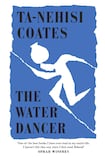
In an interview on The Late Show with Stephen Colbert, Ta-Nehisi Coates revealed that The Water Dancer took a decade to write and “to get it right”. Already an award-winning journalist and recipient of the MacArthur Genius Grant, Coates made his name with the bestseller Between the World and Me (its title taken from a Richard Wright poem about a black man who becomes incapacitated with fear when he discovers the site of a lynching), and the essay collection We Were Eight Years in Power.
As a journalist, he found himself growing increasingly frustrated with interviewees ducking answers or insisting on the “truth” of something that was patently untrue, and so began to wonder if fiction could achieve what factual writing could not. Storytelling, he decided, had the power to go beyond myth. In correcting such faulty narration, he has neatly upended imagination and reality; in The Water Dancer’s magical other-history, fiction is being used to reassert, even to create, fact.
Hiram Walker, the son of a white plantation owner and a black slave, is born with a photographic memory and a special power, that of “Conduction”. The only thing lost to his memory is his mother, taken and sold when he was nine. His single recollection of her is watching her dance in the woods, a water jar perfectly balanced on her head. Being one of the Tasked (Coates rejects the word “slave”) means, for Hiram, being born into, “a world of forbidden victuals and tantalizing untouchables – the land around you, the clothes you hem, the biscuits you bake. You bury the longing, because you know where it must lead”. It is a life of constant fear and yearning. “The Task does not bargain, does not compromise, it devours,” Hiram notes, later remarking, “this was a time in our history when the most valuable thing a man could own, in all of America, was another man”.
Coates is fierce and unflinching in describing the lives of the Tasked and their owners: “Sloth was literal death for us, while for them it was the whole ambition of their lives.” He also lays bare the cruelty and anguish of family separation. In the interview with Stephen Colbert he drew parallels between his story and the US government’s treatment of migrants, saying, “when you want to be cruel to other people as a policy, family is often where that happens”.
The novel's biggest strength is the powerful alternative version of history it offers; one in which the Tasked dance across the water rather than drown in the waves
Hiram lives at Lockless, his father’s Virginia plantation, its corrupt grandeur now fading. As with all such houses, Lockless had a network of underground rooms and entrances, marvels of engineering, “so as to make it appear powered by some imperceptible energy”. That energy was human labour. Hiram knows that when Lockless does fall, he will not be freed, “but would instead be sold or passed off. And I knew by then that my genius would not save me, indeed my genius would only make me a more valuable commodity”.
Hiram escapes and joins the Underground, the network of secret agents working to liberate the Tasked (this isn’t a spoiler because his flight and its consequences feature in the book’s blurb, though you do have to wait well over a hundred pages for it to begin. Not having read the blurb first, I found the sequence of escape-capture-escape equally frightening and unputdownable). He is betrayed by a friend, an unforgiveable deception: “To fully accept his betrayal was to accept the fullness of what had been done to us, how thoroughly they had taken us in, so that even our heroes, our own myths, were but tools to further maintain the Task.”
Living free
Hiram’s exceptional memory is useful to the Underground, but his true value comes when he harnesses his powers of Conduction, a gift so rare as to be spoken of almost as sorcery. One woman working in the Underground – Harriet Tubman, referred to in the novel as Moses – is famed as the living master of it. “The power she wielded had been dubbed ‘Conduction’… for how it ‘conducted’, seemingly at will, the Tasked from the shackled fields of the South to the free lands of the North.” Free and in Philadelphia, Hiram devotes himself to the cause, only to find liberty more complex than he had imagined. As his friend Otha tells him, “finding freedom is only the first part. Living free is a whole other.”
The first title in the new Oprah Book Club partnership with Apple, The Water Dancer is being compared to the work of Toni Morrison and James Baldwin. Putting Hiram’s narrative to one side, the novel’s biggest strength is the powerful alternative version of history it offers; one in which the Tasked dance across the water rather than drown in the waves. Where people remain alive, families stay together, and all are free to go home.













